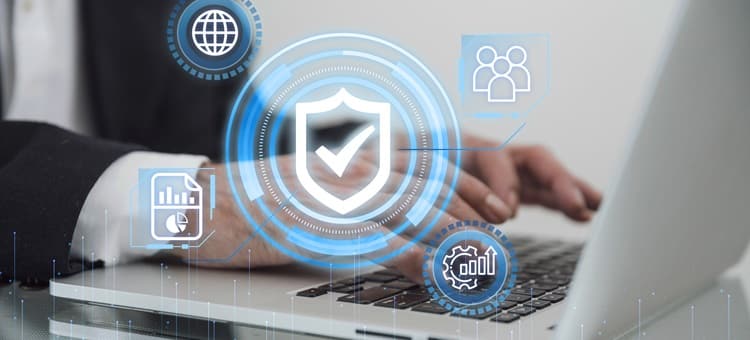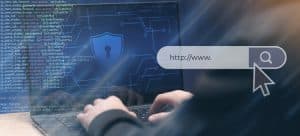In this digital age, cybersecurity is more important than ever to keep kids’ schooling safe. As more schools go online, kids are learning a lot and interacting with technology all the time.
They now have a lot of new options, but they are also more likely to be hacked.
Using technology in school leads to several problems. Cyber threats can be found everywhere online.
Online, students need to be careful because of sophisticated fake attacks that steal personal information and slow the spread of malware and ransomware.
Threat actors use social engineering to get personal and school info, which makes things even more complicated.
This cybersecurity lesson is meant to show students these risks and give them the tools they need to use the internet safely.
The sheer number of online threats makes proactive cybersecurity even more important for reasons other than school safety.
This website gives students both academic and useful safety information that they can use in their everyday digital lives.
As we learn more about hacking, it becomes clear that ignoring internet safety can lead to big problems. Cyberattacks are bad for schools because they can stop lessons and make people less trusting of digital infrastructure.
Because of this, it is very important to have a complete cybersecurity guide for students. This helps make the classroom a safe and stable place to learn.
Best Practices for Cybersecurity
Effective safety measures are needed to keep students’ personal and academic information safe as they learn online. This part has some of the best tips for keeping your computer safe. It gives you useful knowledge and lets you act right away.
Use Only Verified Resources
Students should only use trusted sources for homework and project aid to protect academic information.
Essay writing is popular among learners, but they should only utilize secure and honest providers.
Writing services are popular for many reasons. Such assistance saves them with tight deadlines, hard topics, or heavy workloads. They help improve the text and understand complex academic subjects.
This convenient and accessible support helps kids succeed academically by facilitating collaboration between learners and skilled writers.
Papersowl is unique among such assistance since it stresses consumer safety and happiness. They provide a range of support, including scholarship essay writing services for students, which receive not only well-crafted content but also a polished final product—safeguarding user data and preserving privacy and trust while teams collaborate to make it stand out.
When using reputable homework services, people can protect their personal and educational data.
Steps to Take if a Student Suspects a Security Breach
- Immediate Isolation: If a student thinks their device has malware or a security hole, they can stop the damage by cutting it off from the network.
- Contact IT Service Desk: Reach out to your school’s 24×7 help desk services team right away. Please explain what went wrong, what you did before you became suspicious, and any problem messages that came up.
- Change Passwords: For extra safety, change the passwords for all of your important accounts. This includes email, school portals, and other services that were linked to the stolen gadget.
Creating Strong Passwords: The First Line of Defense
Often, the first step in keeping data safe is to use a strong password. It’s not just a good habit to make strong passwords; they keep people from getting in without permission. When making and keeping passwords, keep these tips in mind:
Complexity is important. There should be large and small letters, numbers, and special characters in passwords. Do not share dates or common words.
Each account should have its own unique password. With unique passwords, hackers can’t do as much damage.
Managers of passwords: Using a good password manager makes it easier to manage long passwords. These tools for making and saving passwords only need one master password.
Implementing Two-Factor Authentication (2FA): Adding an Extra Layer of Security
With two-factor authentication (2FA), you need more than a password to prove who you are. This lowers the chance of someone getting in without permission, even if the login is stolen. The best way to use 2FA:
You can use 2FA on email, social networks, and educational tools. To keep your account safe, use this function as much as possible.
You can use hardware keys, login apps, or SMS codes as 2FA. Choose your preferred way to make it safer.
Keeping Software and Systems Updated: Fortifying the Digital Fortress
For cybersecurity, keeping software and devices up to date is very important. Updates are made by developers to fix problems and make systems safer. These rules will keep your online space safe:
Set up your operating system, security software, and other programs to get changes automatically if you can. This makes sure that you get the newest security fixes right away.
Check for New Content: If your software doesn’t update itself, make sure you check it often. To quickly fix holes in security, make the most important changes first.
Safe Internet Browsing Habits: Navigating the Digital Landscape Securely
The internet is big and always changing, but it also has risks. Learn how to use the internet safely to stay away from scams and places that aren’t safe. Check out these steps:
Check the website’s validity: Check the legitimacy of websites before you enter personal information or click on links. And look for HTTPS to make sure the site is safe and related to your schoolwork.
Use computer tools that are safe: Use updated, well-known computer tools. To keep your computer safer, change the privacy settings and add ad and script blocks.
Securing Personal Devices: Safeguarding Your Academic Hub
In this day and age, people do their schoolwork on computers, cell phones, and tablets. For academic privacy, keeping these gadgets safe is very important. These tips will help you stay safe on the internet:
Protect the info on your devices by encrypting them. Your private information will be safe even if you lose or have your computer stolen.
Install antivirus and malware software that you can trust: Pick a good antivirus and malware tool and keep it up to date. Scan your device often to find and get rid of threats before they get into your system.
You can avoid common online risks by making these smart habits a normal part of your digital life. Next, we’ll talk about why knowing about hacking is important and how schools can help keep students safe online.
Understanding Cybersecurity Risks in Education
Because digital education is changing so quickly, students need to be aware of and protect themselves from a number of safety risks. By looking at the most common threats, we can help students make their digital defenses stronger.
Phishing Attacks: A Web of Deception
Phishing attacks, which hackers use to steal personal information, are the biggest safety worry for students.
Phishing is the use of fake emails, texts, or websites to get people to give out their usernames, passwords, and banking information.
People who do phishing sometimes pretend to be from a school, an online learning site, students, or teachers.
To avoid phishing attacks, students need to learn how to spot texts that look fishy. This includes making sure that email addresses, linked links, and personal information are correct before posting them online.
Two-factor authentication (2FA) makes things safer because even if your login information is stolen, you still have to prove it.
Malware and Ransomware: Digital Threats Unleashed
A student’s personal and school life can be ruined by a lot of spyware and viruses. Malware can damage data and stop computers from working. Ransomware, on the other hand, locks up files and asks for a fee to unlock them.
To stay safe from malware and ransomware, students should keep their security and antivirus software up to date. You’ll be less likely to fall for these clever scams if you use safe browsing, stay away from sketchy downloads, and be careful with email attachments.
Social Engineering Tactics: Exploiting the Human Element
Cybersecurity threat players use social engineering to trick people, especially students. To get trust and private information, this could mean pretending to be a student, teacher, or boss. Social engineering uses feelings, a sense of urgency, and comfort to hurt people.
Students shouldn’t trust people who ask for personal information without being asked, even if they look familiar. There are other ways to check texts besides giving out private information online. This will help stop social engineering.
For kids to use technology safely, they need to know about the risks that come with it. In the next part, we’ll talk about how these threats affect schools and teachers.
Educating Students on Cybersecurity Awareness
Kids need to learn about cybersecurity because the world of digital schooling is always changing. To make people more digitally aware, you need to know more about online risks and how they can affect people than just following your own security rules.
The Critical Importance of Cybersecurity Education
Students learn how to spot, react to, and stop attacks outside of school as part of cybersecurity education. This is why teaching safety is important:
Being aware is the first line of defense. In order to lower risks, schools teach students about cyber dangers. Kids will be less likely to fall for scams, phishing, and other bad things if they know this.
Cybersecurity education not only keeps you safe online but it also makes you a better digital citizen. Everyone is safer online when people know how to use technology in a good way, protect their privacy, and know what happens if they do something wrong.
Schools are better when their kids are well-educated. The students’ work on cybersecurity makes the digital world stronger and helps the school deal with and respond to crises.
Integrating Cybersecurity into the Curriculum
Schools should think about adding cybersecurity to the normal curriculum so that it is taught naturally. In this case, teach hacking through classes and workshops that are just for that. People learn how to spot phishing attempts, keep their gadgets safe, and understand how cyber risks affect society at these workshops.
Putting real-life hacking problems into your classes will help you learn. Through case studies and practical assignments, students learn how to use technology in difficult real-life scenarios.
Encourage schools and people who work in safety to work together. Mentorship programs, guest talks, and webinars are all ways for students to learn about business and new risks.
Resources and Online Courses for Continuous Learning
Students can get cybersecurity tools and take online classes when they’re not in class. Schools should make a list of trustworthy websites that offer cybersecurity classes. For example, Coursera, edX, and Udacity all do this. You can choose how fast you want to study in these online classes.
Make fun classes that keep students interested in what they’re learning. These classes teach safety, ethical hacking, and how to use what you learn in the real world.
Set up a club at school where kids can talk about current threats and work together on projects. Getting the community involved in digital security makes people more committed.
Schools help students become digitally literate and security-aware people by teaching cybersecurity as part of regular classes and providing opportunities for ongoing learning. In the next part, we’ll talk about how to handle cybersecurity events quickly and effectively.
Responding to Cybersecurity Incidents
Even with careful security, threats can still get into any system. Because of this, it is important to have a complete protection plan. Students, teachers, and organizations must work together to quickly find problems, report them, and fix them.
If a student thinks there has been a breach in security, they need to move quickly to limit the damage.
Reporting Mechanisms Within Educational Institutions
To make managing easier, schools should make it easier to report cybersecurity events. As an example:
Designated Reporting Channels: Make it clear to kids how to report cybersecurity problems. For this, you might need different email addresses, web forms, or IT help desk hotlines.
Anonymous Reporting Options: Ask the kids if they want to remain anonymous when they report problems. Reporting threats anonymously encourages openness and makes students feel safe making threats.
Collaborating with IT Support for Swift Resolution
The IT helpline and the students must work together to quickly fix problems. The IT help desk should:
Conduct a Thorough Investigation: The IT service desk should look into what happened and how big it was after getting a report.
Implement Mitigation Measures: Based on the investigation, you should take quick steps to stop the damage and stop it from spreading. This could mean splitting broken systems, fixing bugs, or locking down accounts that have been hacked.
Communication with Stakeholders: Getting in touch with stakeholders: Keep kids and other important people in the loop while the problem is being solved. Giving information at the right time builds trust and makes sure that everyone is aware.
Educators can deal with cybersecurity incidents by having a good incident reaction plan and a culture of reporting and working together on time. The next part will quickly go over the article’s main points, stressing how important it is to stay alert in the world of cybersecurity, which is always changing.
Conclusion
Because of the complicated link between technology and education, safety must come first for both kids and schools. Cyber dangers can cause problems and risks in online learning, so we need to be careful and aware.
This thorough lesson explains to students how they can protect themselves from hacking threats and gives them ways to do so.
This handbook helps school groups understand cybersecurity by showing them how to spot phishing attempts and act quickly when something goes wrong.
Now it’s up to the students to use these best practices every day online and make them habits that will help them do well in school.
Schools must also teach cybersecurity as part of regular education and encourage a love of learning.
Being careful is the most important thing you can do because safety changes all the time. Follow professional best practices, keep learning, and encourage digital responsibility, and you’ll be sure you can safely navigate the internet world when you start school.
If we all work together, we can make digital schools better and make the future safer and more stable for everyone.







